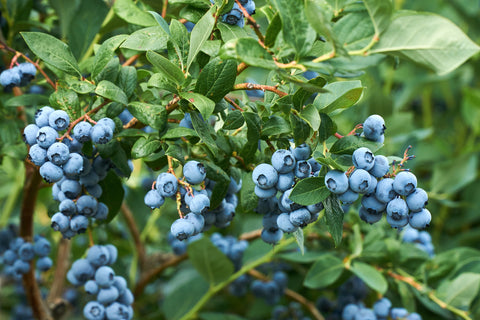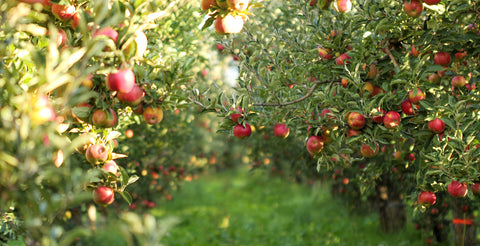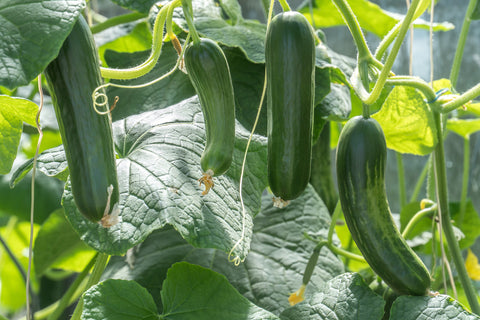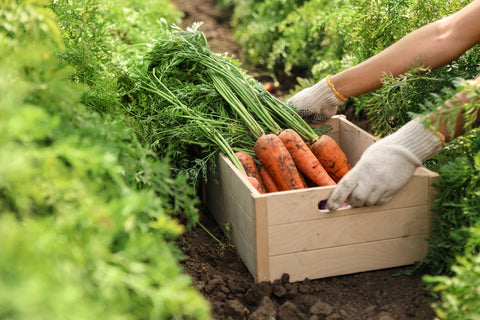Have you ever imagined how satisfying it would be to pick a ripe tomato or a delicious strawberry from your own garden? The appeal of cultivating your own fruits and vegetables is indisputable, it provides a stronger bond with nature in addition to delectable benefits.
In today's fast-paced world, where grocery store shelves are lined with produce of uncertain origin, to grow your own food has become a trend for many. But which is easier - growing fruits or vegetables?
So, let's embark on a journey to explore the easiest fruits and vegetables to grow at home, cultivating a greener, more sustainable lifestyle along the way.
• Deciding Between Fruits and Vegetables: Factors to Consider

When deciding between growing fruits and vegetables at home, several factors come into play. Here's a list of considerations to help you make the best choice for your gardening journey:
1. Space
Evaluate the available space in your garden or outdoor area. For example, strawberries and dwarf fruit trees are the best fruits to grow in a garden, while vegetables like tomatoes and peppers may require more room to spread out.
2. Climate
Choose fruits and vegetables that thrive in your region's climate to ensure a successful harvest. For example, tomatoes and peppers love warm, sunny weather, while leafy greens like lettuce and spinach prefer cooler temperatures.
3. Time and Effort
Some fruits and vegetables require more care and maintenance than others. If you're a beginner or have limited time to dedicate to gardening, opt for easy to grow varieties like zucchini, radishes, and strawberries.
4. Yield and Harvest Frequency

Determine how much produce you want to harvest and how frequently you want to harvest it. Throughout the growing season, berries and grapes, for example, usually yield repeated harvests, ensuring a steady supply of fresh fruit. In contrast, most vegetables are harvested once when they reach maturity, so consider your preferences for harvesting frequency.
5. Gardening Experience
Before starting a garden assess your level of gardening experience and expertise. If you're a beginner, start with fruits and vegetables that require minimal maintenance and are resilient to common pests and diseases. As you gain confidence and experience, you can gradually expand your garden to include more challenging varieties.
Buy Plant Care Products
6. Personal Preferences

When choosing which fruits and vegetables to plant, take your nutritional requirements and personal tastes into account. Select the varieties that are highest in nutritional content and that you and your family love eating.
Easiest Fruits and Vegetables to Grow
When it comes to the best fruits and vegetables to grow in a small garden, starting with varieties that are known for their ease of growth can boost your confidence as a beginner gardener. Here are five of the best fruits and vegetables to grow in a small garden.
• Easiest Fruits and Vegetables to Grow
a. Easiest Fruits to Grow -
1. Strawberries
These small, sweet berries are a favorite among home gardeners for their ease of cultivation. Strawberries can be grown in containers or garden beds, making them suitable for gardens of all sizes.
2. Blueberries

Blueberry bushes are relatively low-maintenance and can thrive in acidic soil. With proper care, they can produce abundant harvests of delicious, antioxidant-rich berries.
3. Raspberries
Raspberries are fast-growing perennials that can provide a bountiful harvest with minimal effort. They prefer well-drained soil and plenty of sunlight, making them a perfect addition to any garden.
4. Tomatoes
Tomatoes are a staple in many home gardens due to their versatility and abundance. With a wide variety of cultivars to choose from, even beginner gardeners can enjoy a successful tomato harvest.
Buy Tomato Seeds
5. Apples

While apple trees require a bit more space and patience compared to other fruits, they are relatively easy to grow and can provide years of delicious harvests. Choose dwarf or semi-dwarf varieties for smaller gardens.
Buy Fruit Seeds
b. Easiest Vegetables to Grow -
1. Lettuce
Lettuce is one of the easiest vegetables to grow, especially for beginners. It can be grown in containers or directly in the ground and matures quickly, allowing for multiple harvests throughout the growing season.
Buy Lettuce Seeds
2. Radishes
Radishes are fast-growing root vegetables that are perfect for impatient gardeners. They can be sown directly in the garden and are ready to harvest within 3-4 weeks.
Buy Radish Seeds
3. Zucchini

Zucchini plants are prolific producers that thrive in warm weather. With minimal care and regular harvesting, you can enjoy an abundance of fresh zucchini throughout the summer months.
Buy Zucchini Seeds
4. Green Beans
Green beans are a reliable and easy to grow vegetable that can be planted directly in the garden or in containers. With regular watering and sunlight, you can enjoy a continuous harvest of crisp, tender beans.
Buy Green Beans
5. Carrots

Carrots are a popular choice for home gardeners due to their versatility and nutritional value. While they require well-drained soil and regular watering, they are relatively low-maintenance and can be grown in containers or raised beds.
By starting with these easy to grow fruits and vegetables, you can enjoy the satisfaction of harvesting your own fresh produce at home, regardless of your level of gardening experience.
Buy Carrot Seeds
• Conclusion
Whether you're partial to the sweetness of homegrown fruit or the savory satisfaction of fresh vegetables, there's no denying the joy of cultivating your own edible garden. By selecting easy to grow varieties, providing proper care, and embracing the learning curve, you'll soon discover the unparalleled rewards of harvesting your own produce.
So, whether you're tending to an urban balcony garden, a suburban backyard plot, or a rural homestead, remember that the journey towards self-sufficiency begins with a single seed. Happy gardening!









